Test Mobile TV Beeline and Yota TV
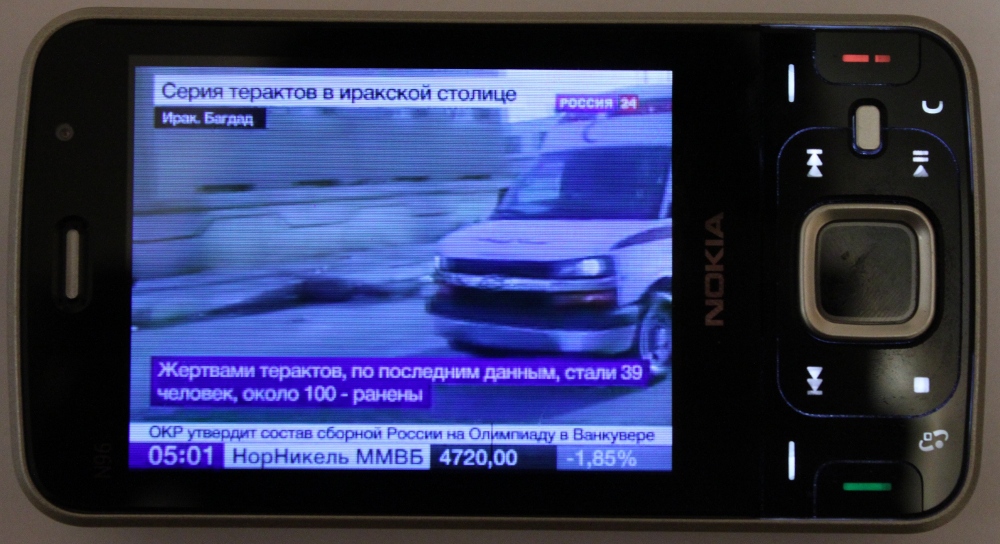
Judging by the discussions of TV programs on the Internet, representatives of the progressive part of humanity adore the place and out of place to flaunt the fact that they do not watch TV. Well, now you can not watch TV not only at home, but also on the road - a great opportunity to become more progressive. It was kindly provided by Moscow telecom operators Beeline and Yota. These companies recently launched a digital television broadcast on DVB-H technology in Moscow. I experienced both solutions and I hasten to share my impressions.
Beeline Mobile TV
The history of this project goes back several years. In the middle of distant 2007, VimpelCom bought Dominant, a company that had experience in the field of terrestrial digital television. The purchase cost 10.5 million dollars, which is quite a bit by pre-crisis standards. Buy bought, and with the launch of the project did not hurry. During the first year, no visible action was taken, then sluggish attempts were made to obtain permission to use the frequency band. In parallel, the company negotiated with the phone manufacturers. Life has shown that business negotiates with business much faster and easier than business with the state: a year ago, thanks to Beeline’s efforts, the world premiere of a Samsung P960 phone with DVB-H support could take place in Russia. But, alas, the resolution on the frequency of knock out by that time failed, so that the right to cut the ribbon and break the cover went to the Dutch. In the meantime, the broadcasting network continued to be built, occasionally broadcasting - without permission. This, of course, an offense, but in this case, Beeline was in the role of the Elusive Joe, and no one was chasing him.
Finally, in August 2009, permission was obtained, and on December 7, the official launch of Mobile TV Beeline took place. By the way, the advertising channels used to promote the new service are curious. Oddly enough, on TV shows, videos dedicated to Mobile TV have not been met so far. Probably, the potential of the project is too illusive to invest in expensive TV advertising. It does not look like targeting - where else can you find so many potential Mobile TV users, if not in front of TV screens? So far, the service has been advertised through billboards on the streets of the capital - passengers of land transport (including personal) may also be interested in the offer.
')
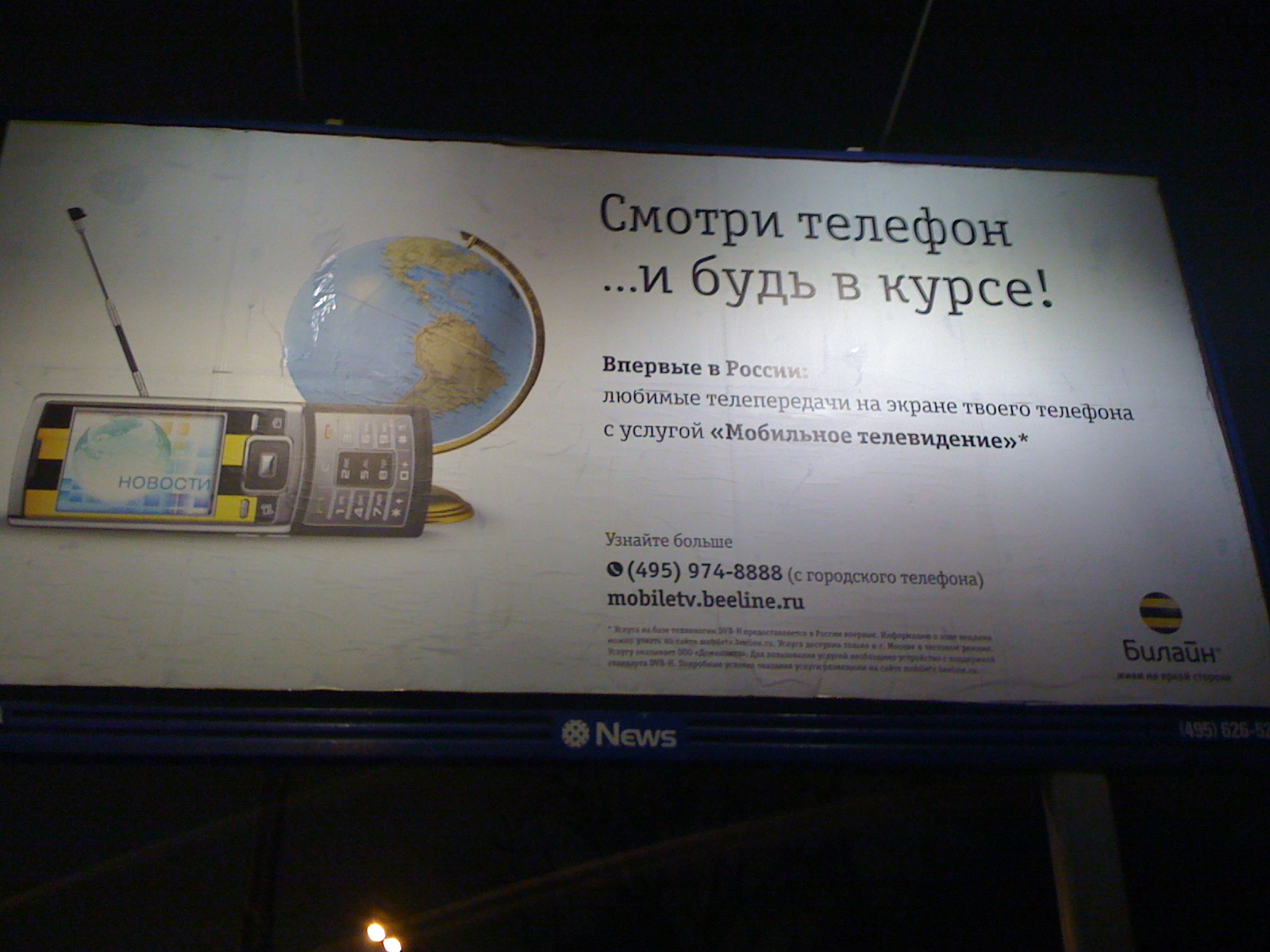

At present, the Beeline Mobile TV broadcasting network consists of 34 transmitters with a capacity of 400 watts each and one 1000-watt synchronizing emitter. The latter is installed on the second highest tower in Moscow near the Oktyabrskoye Pole metro station - as much as 258 meters from the ground. This system, according to Beeline himself, is capable of covering 90% of the city, including the premises: “up to the second wall of buildings”.

To watch Mobile TV Beeline will need a phone. Well it is clear. The phone must support DVB-H technology. Think everything? No, there is one more condition: it should be a Samsung P960, despite the fact that the following is written on mobiletv.beeline.ru : “To use the service, you need a device with support for the DVB-H standard”. Just like Ford: "A car can be of any color, if that color is black."
Finally, the last point: you need to have a special SIM-card. There is nothing special about it, except for the applet designed to identify the Mobile TV subscriber. So far, the service is free for everyone, and the question “xy from xy” remains rhetorical, but then ... More on that below. So, to get the coveted magic SIM'ku, you must either buy it with a new connection (and please the operator by increasing the subscriber base), or replace an existing card in any of Beeline’s offices or in Svyaznoy, Euroset or ION stores, while retaining all the attributes - number, tariff plan, etc., nothing will change, only an invisible applet will be added.
A few months later, Beeline plans to split the set of channels into packages. The main channel, including on-air channels, will be provided free of charge (this is also due to the requirements of the legislation - there is such a thing as a social package of channels), you will have to pay for the rest regularly. By the way, in fact, the Basic Package will probably be only shareware - users will have to pay a subscription fee for Mobile TV service as such.
Now there is only one package in Beeline Mobile TV - Basic. It includes the following channels: Channel One, Russia 1, Russia 2, NTV, Petersburg Channel 5, Bibigon, Gameland TV, 7TV, Muz-TV, RU.TV, A-ONE and Expert-TV.
On the service, perhaps, enough, let's move on to practical experience. To launch an application that is responsible for Mobile TV, the Samsung P960 has a special button placed on the block, accessible even when the slider is folded. Before starting the program, it is advisable to advance in advance the telescopic antenna. The fact is that being hidden in the case, it provides ... no, it does not provide any reception quality at all.
The application runs quite a long time - more than ten seconds. After that, the screen displays a list of channels found by the digital tuner. If you wait a little longer, then the programs of the programs of the channels will be loaded, and in each line there will be the name of what is currently on the air. If you wish, you can watch the entire program for the day for any channel. You cannot choose a broadcaster, the phone is programmed to work with Beeline TV.



Select a channel, go to the preview. On the way to it, only a five-second screen saver remains. There is information that later commercials will be shown in its place, but so far these insidious plans remain just plans. Finally you can watch. Channels are not switched instantly, but with a minimum delay. In case of a signal failure, the buffer is pre-filled — the phone will show something for a few seconds if the connection suddenly disappears.
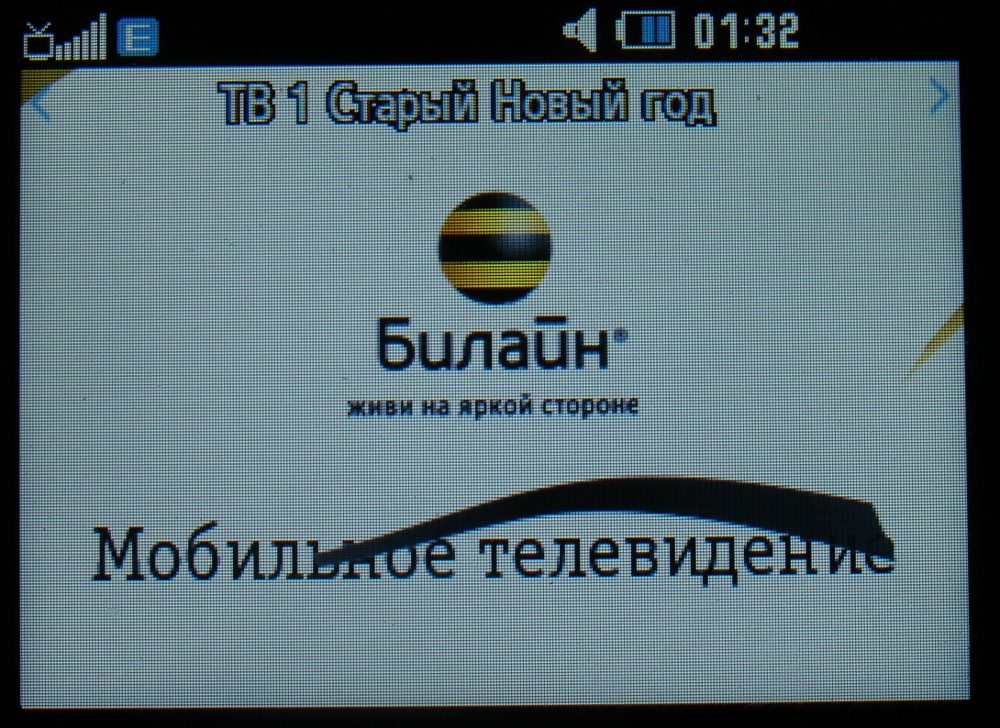
Sound is output either through the speaker or through headphones. For some reason, they didn’t do automatic detection of headphones and switching to them.
You can control the TV viewing without pushing the slider. All that is required is a navipad located directly under the screen. More precisely, to the right of it - the Samsung P960 agrees to operate the TV only in the horizontal orientation of the screen.
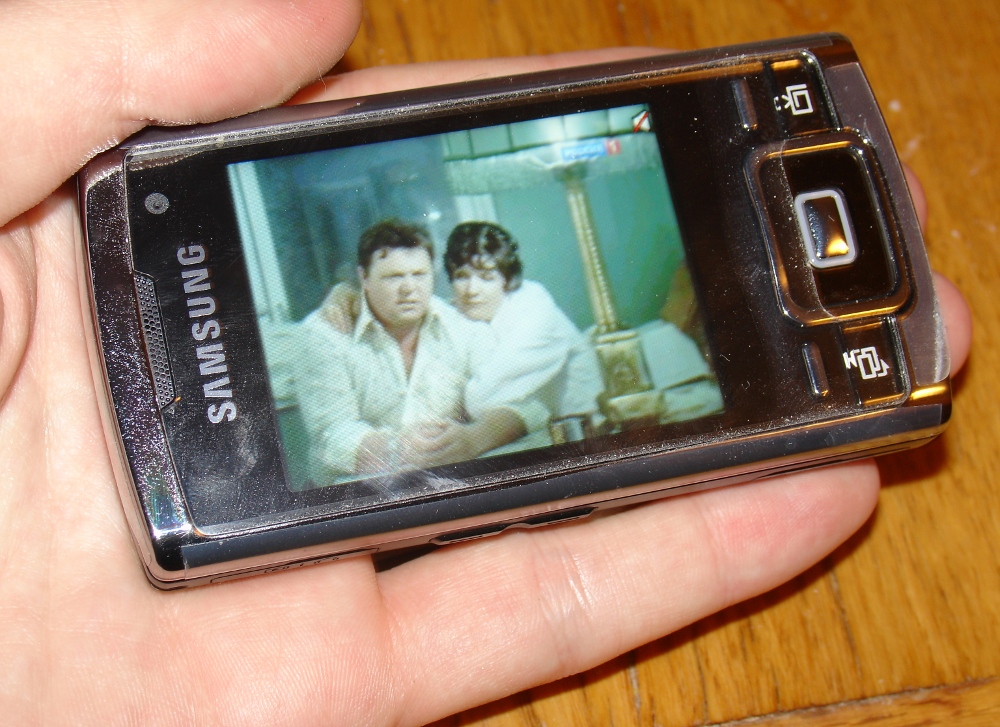
Of the additional functions that make the life of the viewer even sweeter, I note the feature "Picture-in-picture". Although the screen is small and the smaller window of the second additional channel is even smaller, it brings benefits - you can see when the ad unit ends, or, for example, notice the movie studio screensaver and switch to the very beginning of the movie. The window can be moved around the screen and resize it. "Castling" of the main and additional channels is done in two accounts.
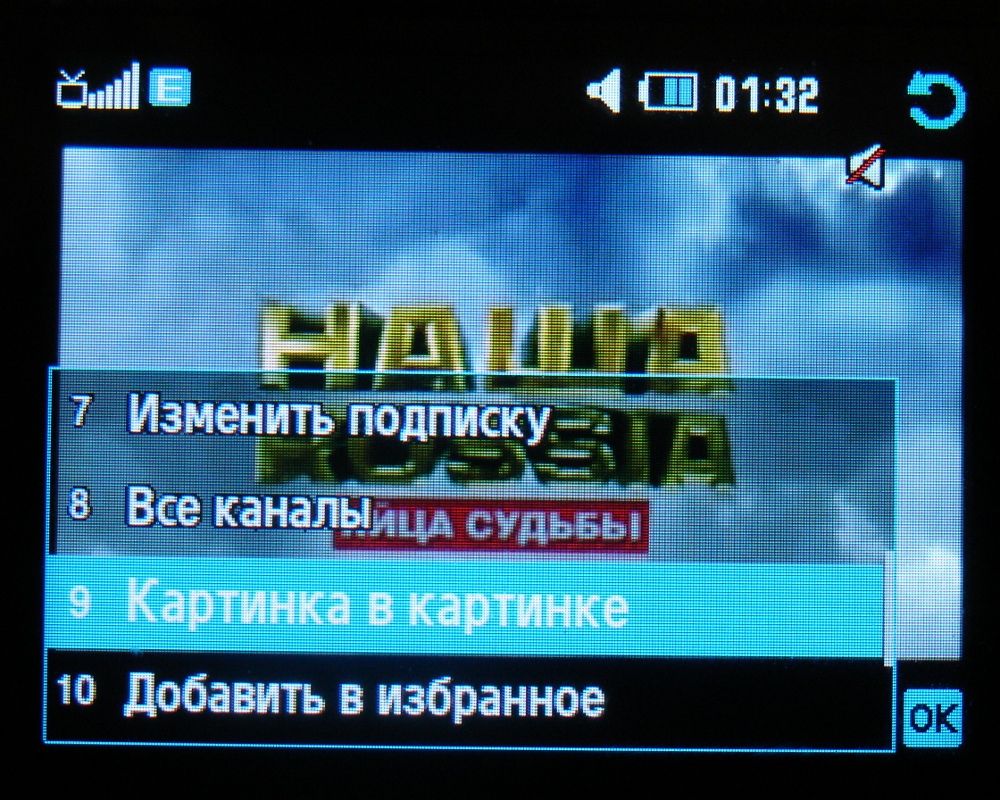
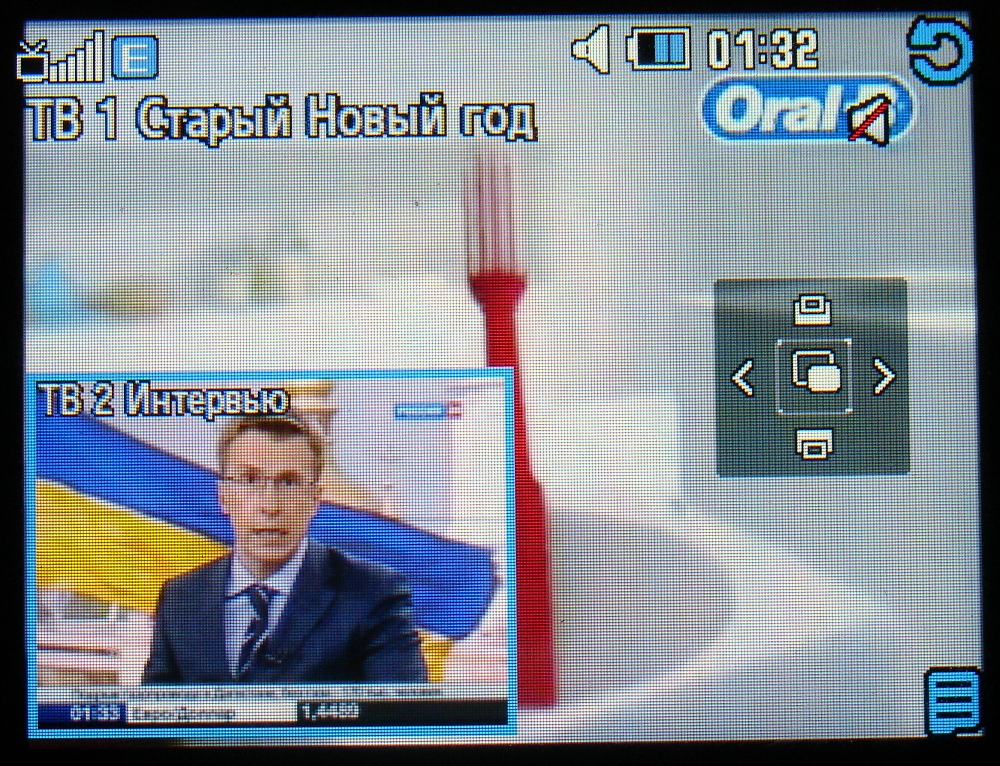

Fully charging the Samsung P960 battery, you can enjoy TV on the go 5 hours in a row. When there is very little energy left, the phone will turn off the TV application so that there remains at least some energy for the last (or as they say - “extreme”?) Call.
The image itself left a very positive impression. The picture is very bright and juicy - in this merit Samsung. Beeline deserves praise for the clarity of the image and for the fact that even in dynamic scenes, the picture quality does not noticeably decrease and it does not “square”.
Just in case, let me remind you that for the time being the service is undergoing a test phase of operation (and we are in it as an experimental), therefore overlays are possible. They have not passed and me. After lying in a drawer for a week during the New Year holidays, the device was genuinely offended and decided to play pranks. The first attempt this year to watch mobile TV rested on the offer to choose a subscription package. Option offered one - Basic. In response to my agreement to connect this package (well, is it not enough - suddenly disconnected from anguish?), The operator sent an SMS message in which, with a condescending tone (maybe it seemed?), Explained that the ordered service had already been connected long ago, say, not it is necessary to connect it again. The street-organ, however, continued to shamelessly deny me the pleasure of watching the
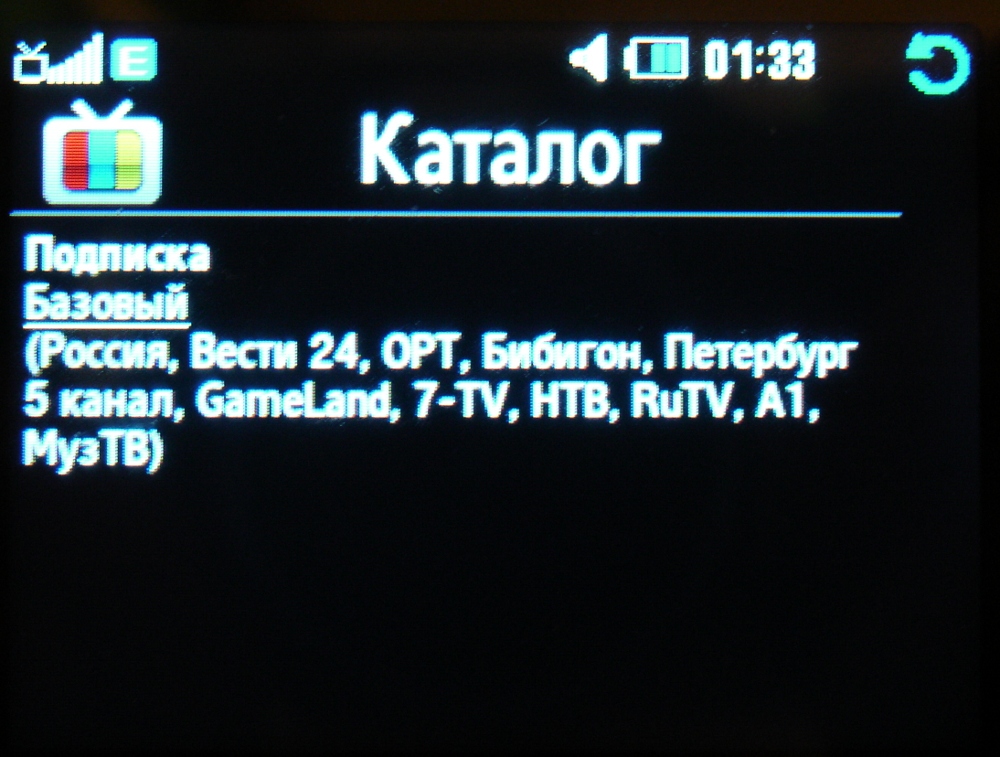
Yota tv
Before you start the story about the television service from Scartel (brand "Yota"), I will explain that Yota TV and Yota TV are two different things. The company has been offering Yota TV service to users for more than a year now - watching TV channels through its Mobile WiMAX network (IEEE 802.16e-2005 - the so-called pre-4G, or 3.9G). Launching DVB-H broadcasting, they did not come up with a separate name for the new service. It is terrible to imagine what chaos this will cause in the minds of current and potential subscribers.
Yota has a completely different approach. In order to watch Yota TV you do not need a special SIM card, there is no stream encryption, you can be a subscriber of any operator to your taste or not be a subscriber at all. The only thing you need is a DVB-H phone. Money from users is also not expected. The emphasis is on the promotion of the service as such, and decided to leave the search for monetization for later. This is even more curious, considering that Yota spent twice as much money on his DVB-H project as Beeline.
The company prefers not to disclose detailed information about its broadcasting network. It is reported only that there are 34 transmitters installed in the city (one less than Beeline’s). The power of 33 of them is 100 W, but the synchronizing transmitter produces as much as 2500 watts. Speaking about the quality of coverage, the company Yota calls the number 90% of the area of the city, without using the terms outdoor or indoor. According to rumors, in the selection of points for transmitters Yota is not philosophizing, but simply follows in the footsteps of Beeline.
Due to the fact that the Samsung P960, for the reasons described above, disappears, only one suitable model is present on the Russian market - the Nokia N96. This model is not so popular, so to find it on sale immediately is not easy, although it is real. The Nokia 5330 Mobile TV Edition, which is a modification of the Nokia 5330 XpressMusic, is soon to come to our market.
As part of Yota TV, users are offered a set of eight channels: Channel One, Russia 1, Russia 24, Bibigon, NTV, Channel Five, Muz-TV and 7TV.

Nokia N96 does not have a special button to access mobile TV, but the path to the desired application is short - through the menu of multimedia functions (and here you can get there in one click). The device sees carriers of both operators - Yota TV and Dominanta, but it will not be possible to connect to the latter. Preparation for the show lasts about ten seconds, not more. Switching channels takes about six seconds.
Watching TV on the Nokia N96 is possible both in portrait and landscape orientation of the screen. The picture-in-picture function is here, alas, no. In order not to miss an interesting program, you can find it in the broadcast program and set a reminder.

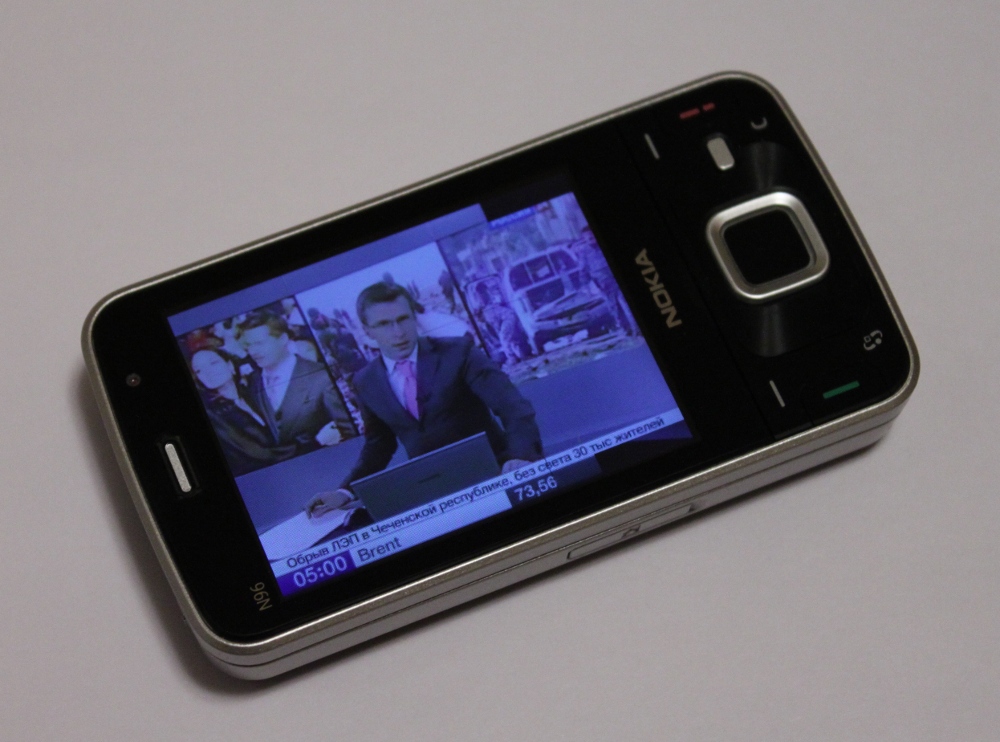
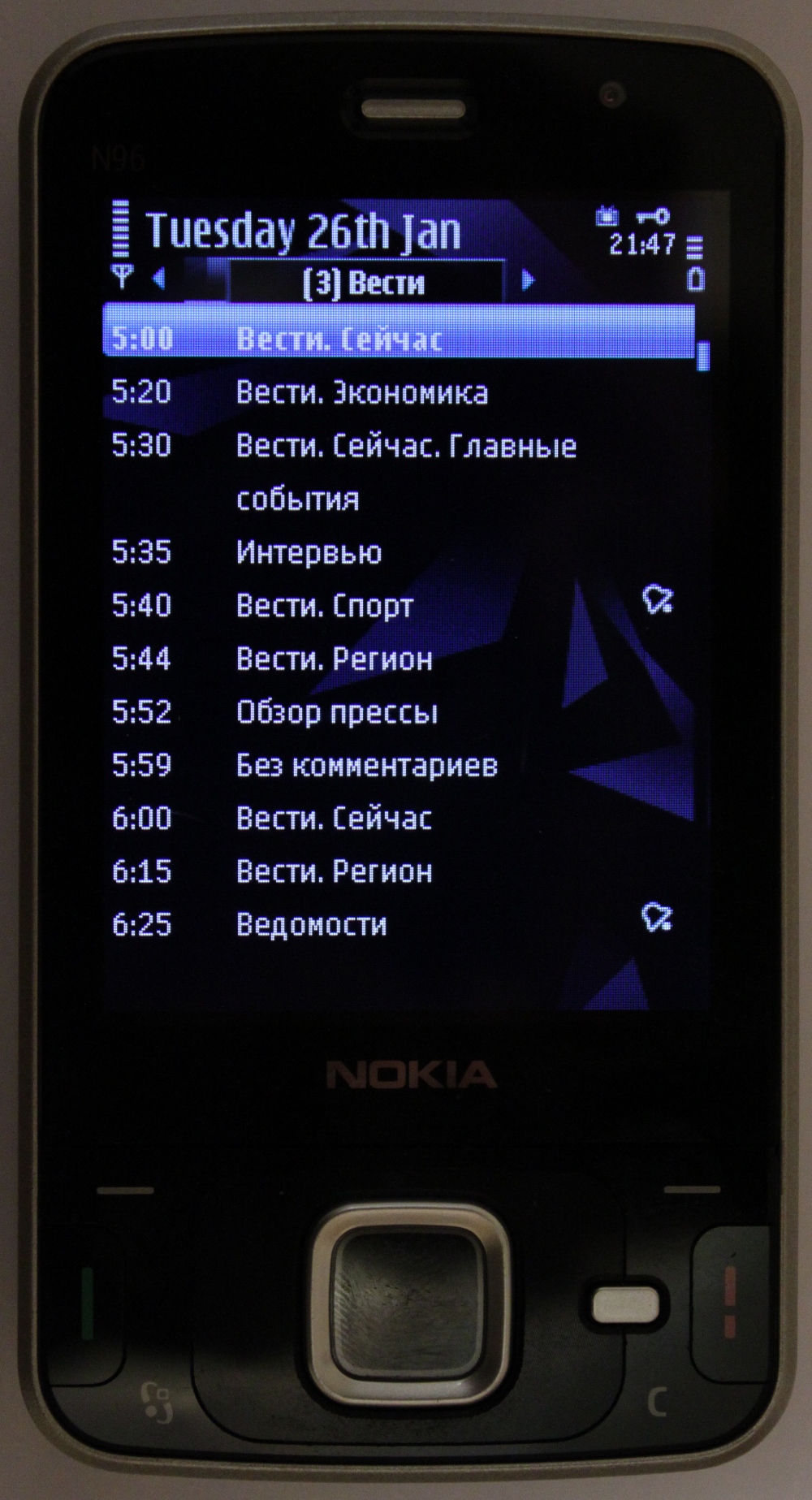
In the case of the Nokia N96, a fully charged battery lasts about 4 hours of TV viewing. Before retiring, the phone squeals plaintively in the hope that the owner will come to his senses and charge. The device does not take measures to save energy, turns off all at once.
In comparison with the Samsung P960, the Nokia N96 screen is noticeably losing. The picture is more dull, dark, not at all juicy. Of course, Yota is not to blame for this, but since the Yota-compatible device is so far alone, we have to consider the whole complex of the device-service in the aggregate. The quality of reception in this bundle is also worse than the biline, but again it is difficult to definitely say who is to blame: the architects of the Yota broadcasting network or the Nokia designers who decided to do with the built-in antenna.

I think we will return to the topic of mobile digital television in the spring, when the test free operation of Mobile TV Beeline is over. The fate of the project will probably depend on the number of service users who have connected to that moment. In general, the company's plans include the number of 25 thousand subscribers for the first year of operation. By the way, on the day of the official launch of Mobile TV, Beeline received about 430 subscribers (and Samsung, respectively, about 430 sales of a particular model).
In the world today, tens of millions of people already use mobile television, including DVB-H technology. Perhaps many readers will note to themselves that they do not need such a service, and in general they do not watch TV. But remember the joke “100 percent of Russians use the Internet. The survey was conducted on the Internet. ” Mobile TV has a potential audience - both young people and those who are bored in traffic jams. The case for advertising services operators. If they manage to gain a critical mass of high-quality subscriber base, then mobile TV will become fashionable. And phone manufacturers will catch up quickly and expand the range of models, there is no doubt about that.
Ilya Rubtsov, especially for Habra and cyberstyle.ru
PS Posted on Television blog. Not sure if you made the right choice - maybe you should put it in Telecoms? Give me a hint :)
Source: https://habr.com/ru/post/82089/
All Articles